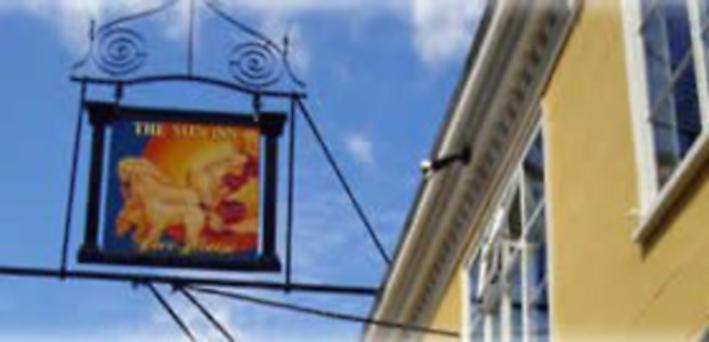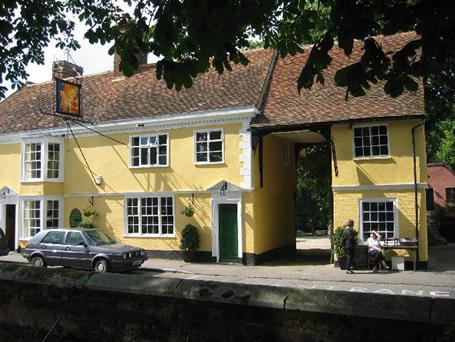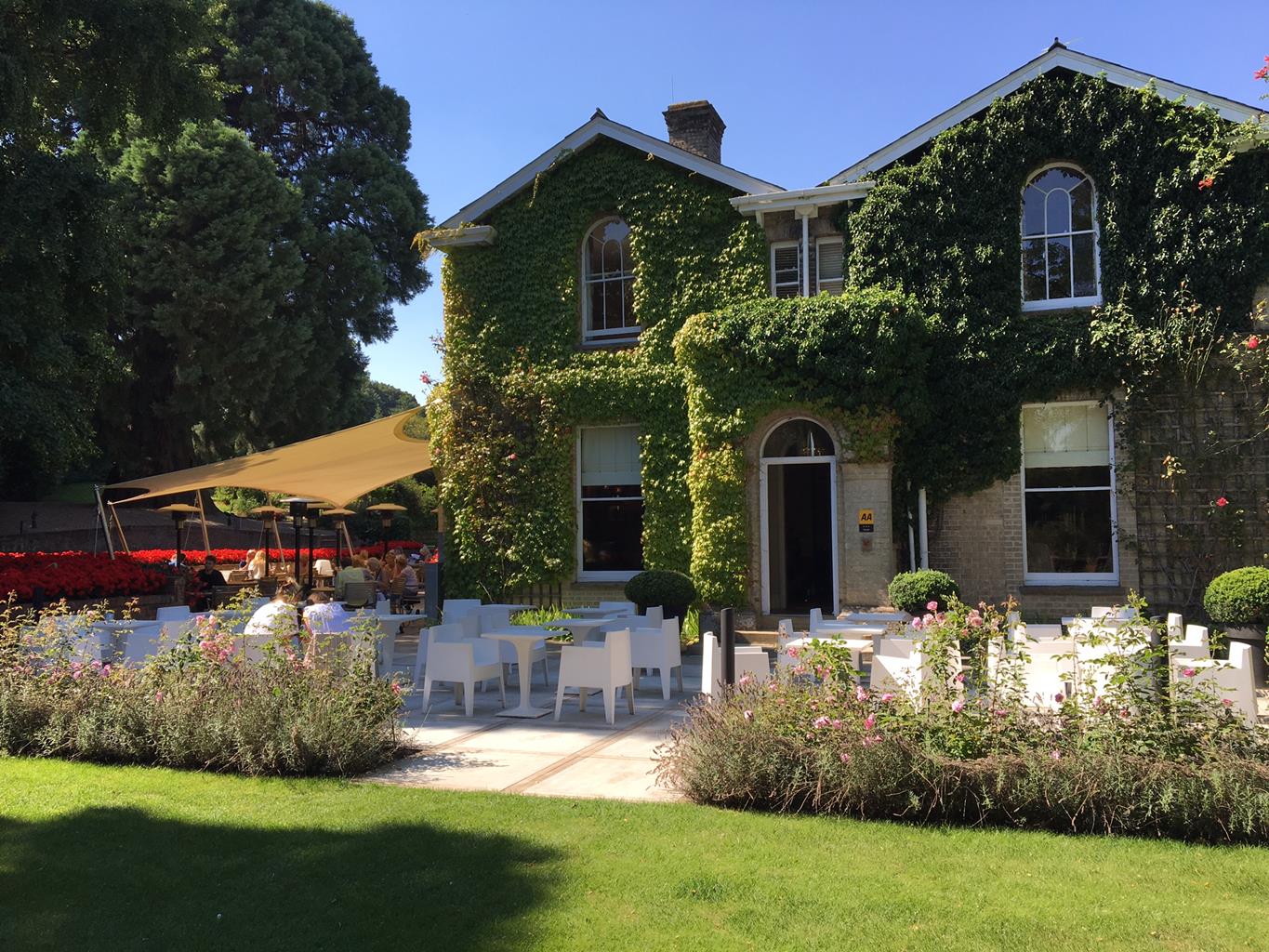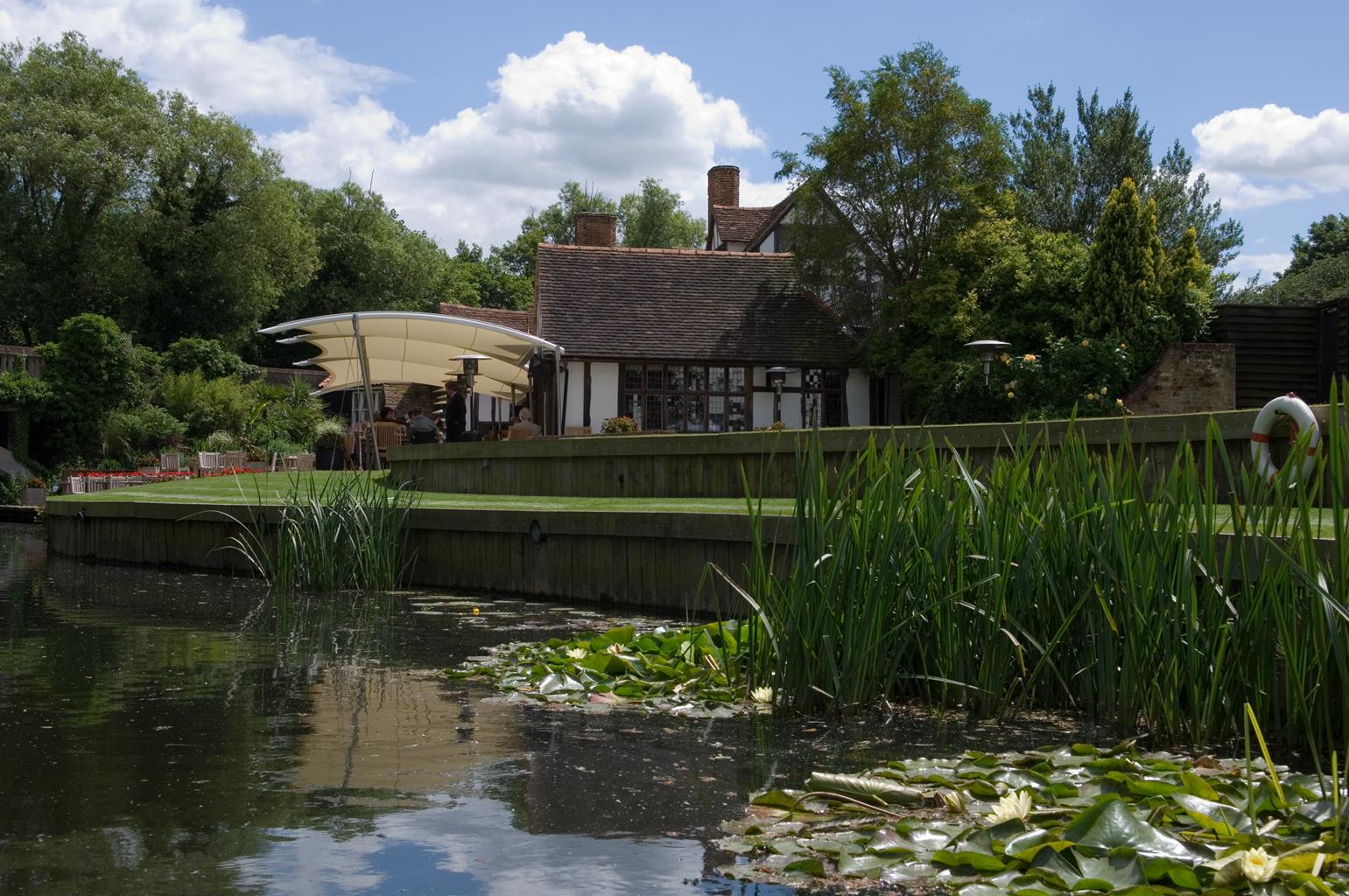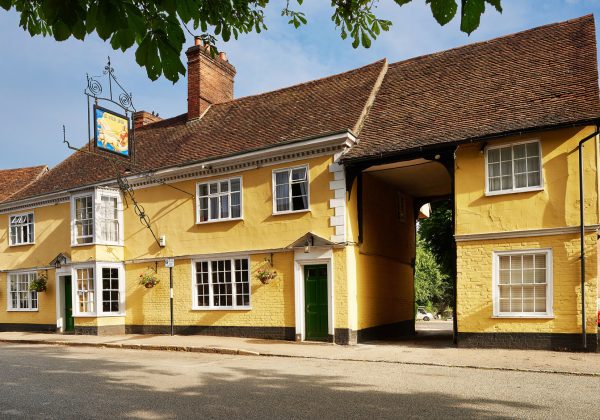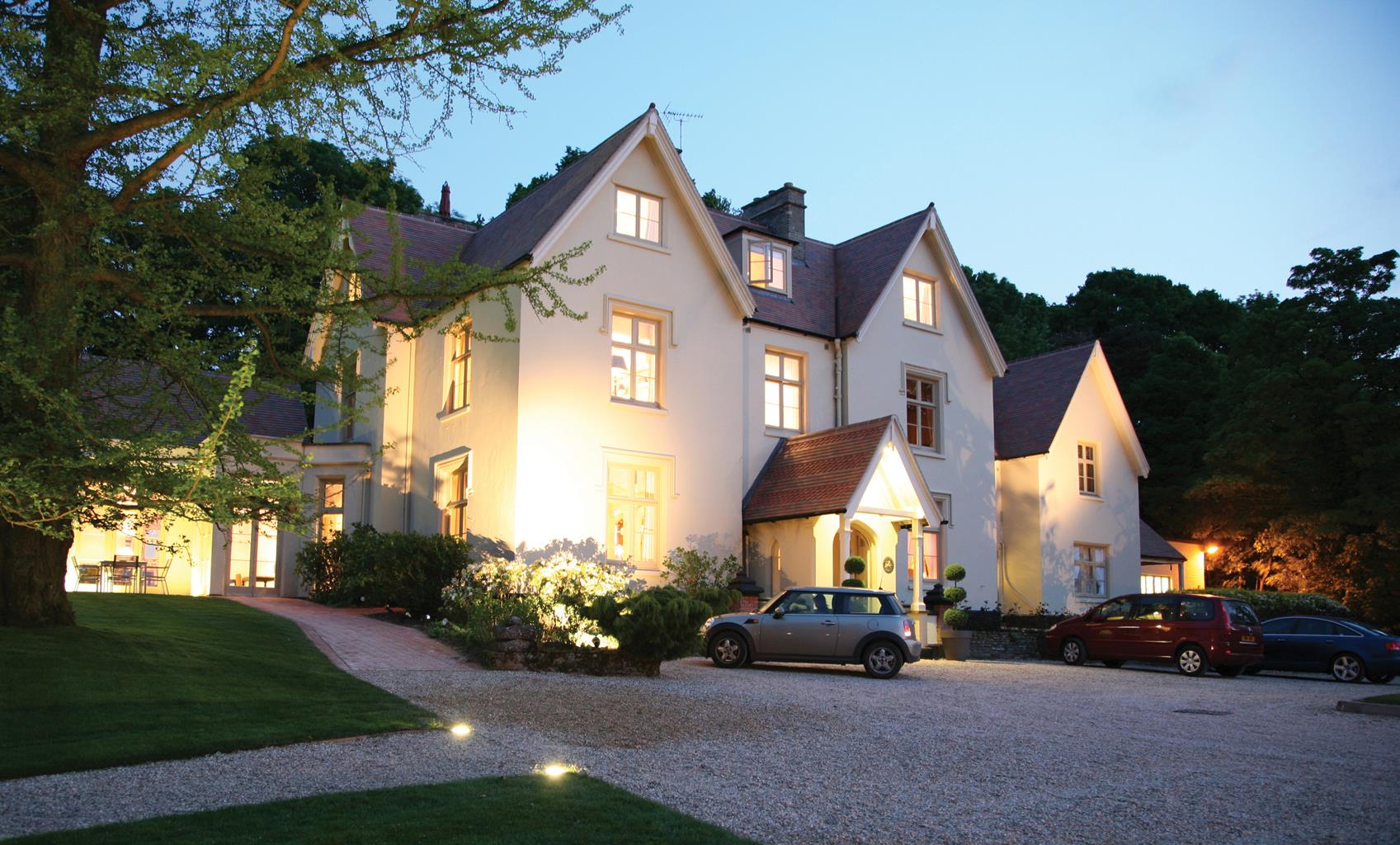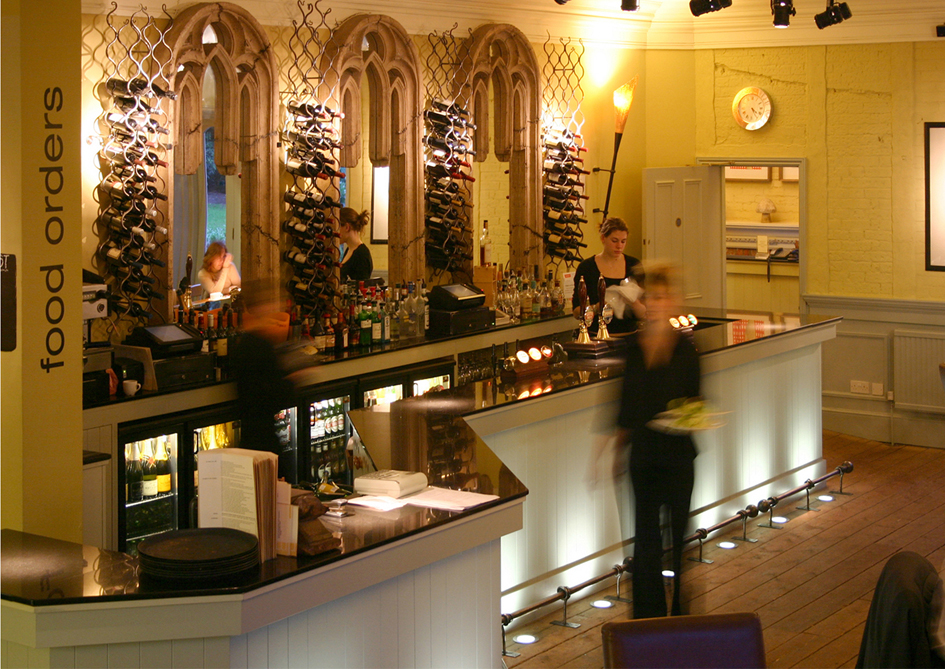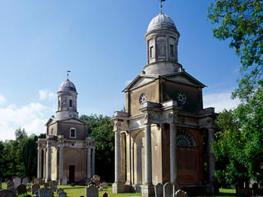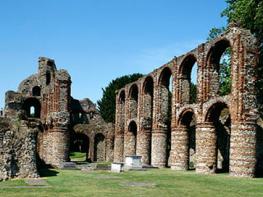The Lion is a couple of miles from the A12 in the pretty village of East Bergholt. The property…
Manningtree – England's smallest town

Where the Witchfinder General was born and buried, and a Site of Special Scientific Interest
6.25 miles (10.1kms)
About the walk
On the banks of the River Stour, Manningtree and neighbouring Mistley have long been associated with mills, maltings and timber. A shipyard was opened in 1753 and, later, ships for the Napoleonic Wars were built at Mistley Quay; Newcastle coal, Scandinavian timber, grain, bricks, chalk, flour and hay were brought down river and transported by barge to London. But these tiny towns, separated by a few miles, are possessed of a darker side: witches!
Matthew Hopkins – Witchfinder General
Cast your mind back to the bad old days of 1644 and imagine reputed witches fleeing from Manningtree's most infamous resident, Matthew Hopkins, better known as the Witchfinder General. If you were female and happened to own a black cat, you risked being branded a witch, to be hunted down by Hopkins' band of distinctly unmerry men. Securing a conviction for witchcraft on the flimsiest of evidence was Hopkins' stock-in-trade, a profession made more unpalatable by the fact that Parliament paid him 20 shillings for each 'guilty' witch. The fate of Hopkins himself is in dispute. Some believe he died a peaceful death at his home in Manningtree in 1647, while others say he was eventually subjected to one of his own witchfinding tests, was found guilty and sentenced to death accordingly. He is believed to be buried in St Mary's Church at Mistley.
This walk starts from Manningtree Station overlooking the River Stour, which separates Essex from Suffolk, and rises to 14th-century St Mary's Church at Lawford to join the Essex Way. It crosses undulating meadows and thick forest – perfect for fleeing witches. A green lane emerges at Mistley, where the Swan Fountain is the last surviving example of landowner Richard Rigby's attempts to turn the area into a fashionable spa.
By the end of the 17th century, Mistley and Manningtree were flourishing, busy ports. Malting, Mistley's oldest industry, took off too, and you can still see the chimneys of the English Diastatic Malt Extract Company (EDME) factory on this walk. If you follow the River Stour, through a Site of Special Scientific Interest (SSSI), back to Manningtree you may spot a large colony of swans, attracted by the waste of the maltings, and other estuary birds including shelduck, teal and ringed plover.
At Manningtree, many of the roof beams of the delightful shops and houses in the High Street date back to Elizabethan times. The witches are long gone, or so they say, and it's hard to believe that between 1644 and 1646 up to 300 victims were rounded up in these parts. Hopkins sometimes held court at local inns, but most of his victims were sent for trial at the notorious Chelmsford Assizes, and many were tried on the evidence of children. Those found guilty were either burnt at the stake or hanged, some of them here on Manningtree's tiny green.
Walk directions
With your back to the station building, turn right at the public footpath sign to Flatford and after a few steps turn left along a steep, grassy path to St Mary's Church. Go through the black gate and, keeping the church on your right, cross the stile over the church wall. Turn left, and at the wooden post follow the yellow waymark half right across the meadow. Cross the earth bridge over Wignell Brook, then go left uphill. Keep the line of trees on your right and go through a kissing gate to join the Essex Way. Just before the house at the top of the hill, go through another kissing gate and bear left to Cox's Hill, onto the A137.
Cross Cox's Hill with care, turn left and after 40yds (37m), at a public footpath sign marking the Essex Way, turn right. Walk downhill passing to the left of a pond and cross the plank bridge over a stream. Bear right to join the grassy path through the Owl's Flight Dell Conservation Area, and pass to the right of a housing estate. Ignoring the concrete path on the left, turn half right onto the cross-field path towards playing fields and join a concrete path to the road. Cross Colchester Road, and at the T-junction turn right into Trinity Road, ignoring signs for the Essex Way. At the Evangelical church turn left between houses to New Road.
Cross New Road and follow the yellow waymarked footpath between backs of houses. At the T-junction turn left onto the wide canopied bridleway. After 70yds (64m) follow the waymark half right and rejoin the Essex Way. Maintain direction, go through a kissing gate, cross an earth bridge over the brook followed by another kissing gate. Keep ahead through the thickly wooded slopes of Furze Hill. As you emerge from the woods, go straight ahead, keeping to the field-edge path to Church Farm. Turn left here onto Heath Road.
Cross the road to the low wall to see the remains of St Mary's Church. Continue north and turn left onto the B1352 and into Shrublands Road, which soon becomes a green lane. Cross the first stile on the right towards the EDME malt chimney and walk under the railway. Bear left into The Green.
Turn left into the High Street, past Mistley Towers, and continue beside the River Stour into Manningtree. Bear left along the High Street and continue for 1 mile (1.6km) along Station Road to the car park.
Additional information
Field paths, footpaths, tracks and sections of road, may be boggy
River estuary, undulating farmland dotted with woodland and residential areas
Can romp free in woodland but must be on lead on farmland and in town
OS Explorer 184 Colchester, Harwich & Clacton-on-Sea
Pay-and-display at Manningtree Station
Manningtree Station
WALKING IN SAFETY
Read our tips to look after yourself and the environment when following this walk.
Find out more
Also in the area
About the area
Discover Essex
Essex is full of pleasant surprises. It has the largest coastline of any county in England, with its fair share of castles, royal connections and scenic valleys. Take Colchester, for example, which was built by the Romans and is Britain’s oldest recorded town. Its castle contains the country’s largest Norman keep and yet, a stone’s throw from here, East Anglia’s newest arts centre promises to put Colchester firmly on the map as Essex’s capital of culture.
Tidal estuaries are plentiful and their mudflats offer migrating birds a winter feeding place. Essex was known as the land of the East Saxons and for centuries people from all over Europe settled here, each wave leaving its own distinctive cultural and social mark on the landscape. Walking a little off the beaten track will lead you to the rural retreats of deepest Essex, while all over the county there are ancient monuments to explore:
- the great Waltham Abbey
- Greensted, thought to be the oldest wooden church in the world
- the delightful village of Pleshey has one of the finest examples of a former motte-and-bailey castle
- Hedingham Castle, magnificently preserved and dating from the 11th century.
Nearby stays
Restaurants and Pubs
Nearby experiences
Recommended things to do
Why choose Rated Trips?
Your trusted guide to rated places across the UK
The best coverage
Discover more than 15,000 professionally rated places to stay, eat and visit from across the UK and Ireland.
Quality assured
Choose a place to stay safe in the knowledge that it has been expertly assessed by trained assessors.
Plan your next trip
Search by location or the type of place you're visiting to find your next ideal holiday experience.
Travel inspiration
Read our articles, city guides and recommended things to do for inspiration. We're here to help you explore the UK.







